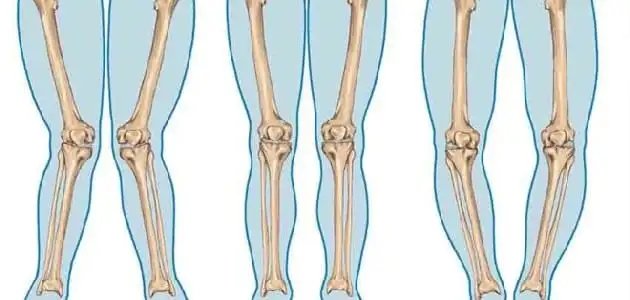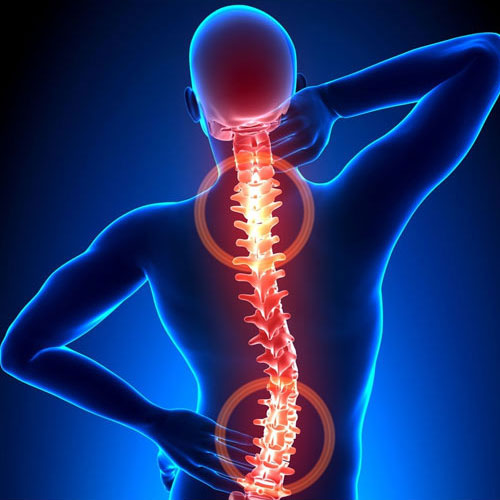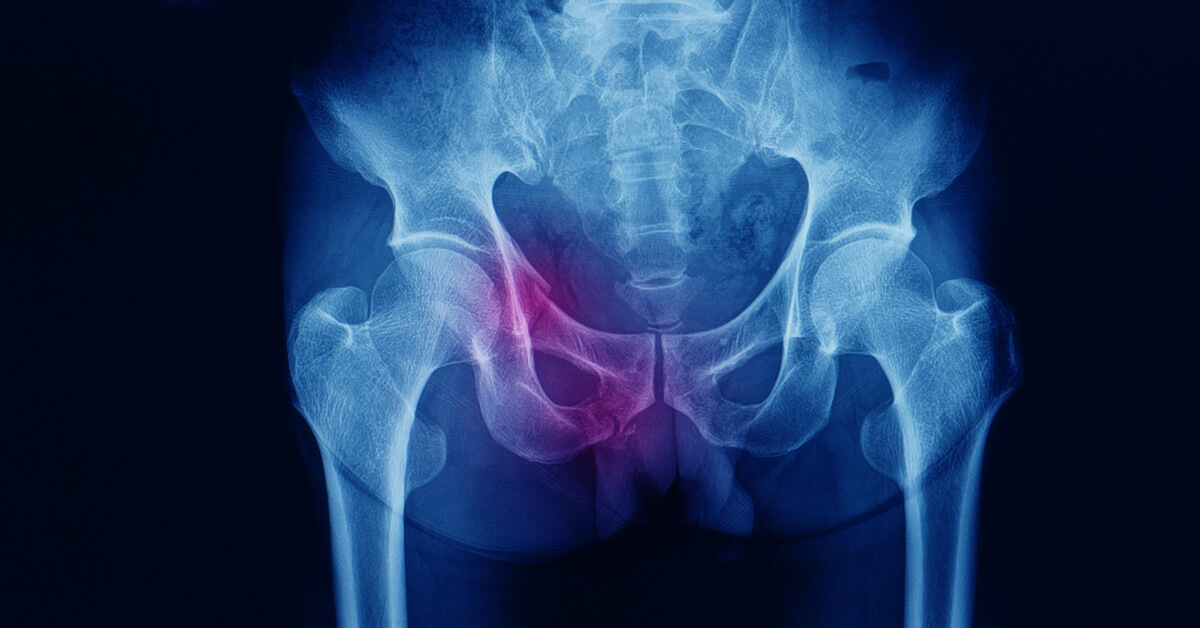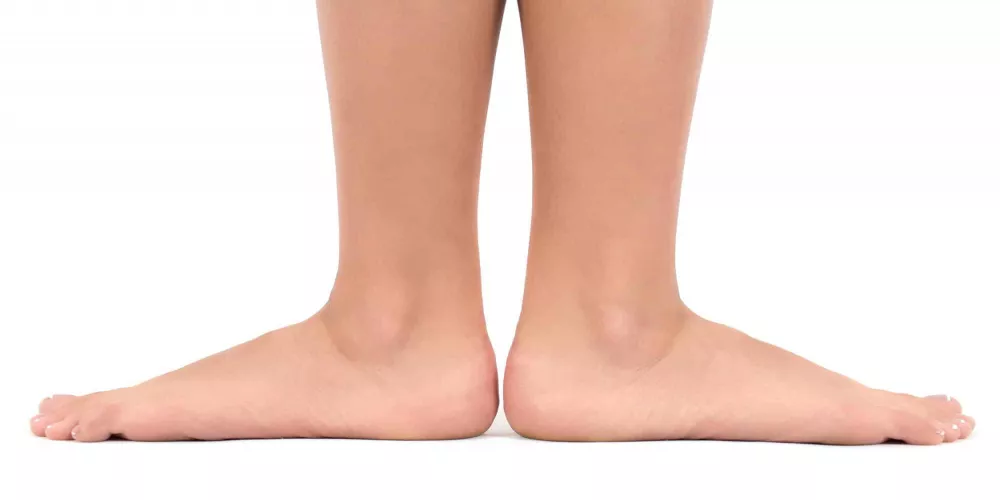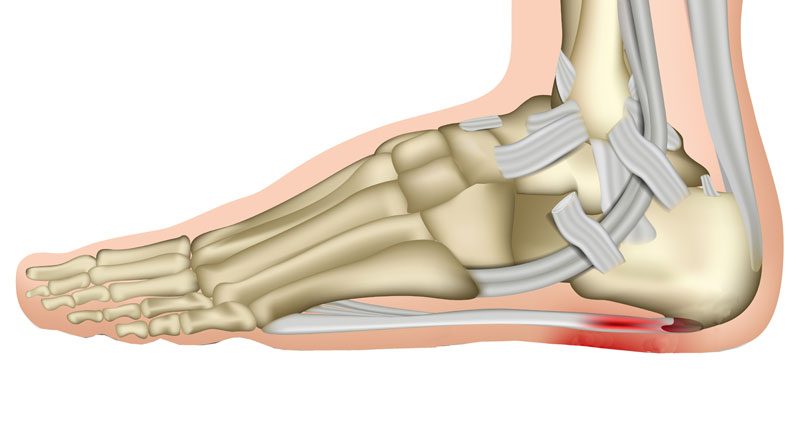What is the treatment for foot numbness due to sciatica? And what is false sciatica?
Does sciatica cause numbness in the leg?
Sciatica is a common condition that many people suffer from, and leg numbness is one of the common symptoms of this disease. In this article, we will discuss some information about sciatica and its effect on leg numbness.
What is sciatica? Sciatica is a condition that occurs when a person suffers from spinal disc compression or nerve inflammation in the spinal region. Common symptoms of this disease include widespread pain in the lower back, hip, leg, and foot.
Does sciatica cause numbness in the leg?
Yes, sciatica can cause numbness in the leg due to the pressure exerted on the sciatic nerve. When a herniated disc or bone spurs in the spine press on the nerve, it leads to inflammation and disruption of blood circulation, which causes numbness in the leg.
What are the other symptoms of sciatica? Besides leg numbness, there are other symptoms that may accompany sciatica, which include:
- Pain in the muscles and joints in the lower back and hip.
- Weakness in the leg muscles and difficulty standing and walking.
- Feeling pain and some tingling in the affected leg.
- Spread of pain to the foot and toes.
How to treat sciatica
Sciatica can be treated in several ways, depending on the patient’s condition and the severity of the symptoms. Treatments available may include:
- Medication: Pain relievers and non-steroidal anti-inflammatory drugs are prescribed to alleviate symptoms.
- Physical therapy: Physical therapy sessions may be offered to strengthen muscles, improve flexibility, and relieve pain.
- Precautionary measures: It is important to rest and avoid activities that negatively affect your back, to reduce the pressure exerted on the sciatic nerve.
When should you visit a doctor? If symptoms persist and do not improve after two to three weeks of practicing precautionary measures, the patient should visit a doctor. It is also necessary to seek medical attention if the pain intensity increases or the symptoms worsen.
To prevent the progression of sciatica and the exacerbation of symptoms, it is crucial to immediately consult an orthopedist or a neurologist to diagnose the condition and develop an appropriate treatment plan.
Treatment for foot numbness due to sciatica
Many people suffer from foot numbness due to sciatica, a condition that causes feelings of numbness and tingling in the feet and thighs and may be accompanied by weakness in the leg and foot muscles. In this detailed list, we will review the treatments available to alleviate the symptoms of sciatica and ultimately get rid of it.
Non-surgical treatment:
- Change from prolonged sitting and follow an active lifestyle in which the person regularly engages in physical activity.
- Practice stretching and strengthening exercises for the leg and thigh muscles, with the help of a specialist in physical therapy.
- Wear comfortable shoes that support the natural arch of the foot.
- Avoid sitting for long periods and standing in the same position for an extended time, ensuring to move and change body positions regularly.
- Avoid tight clothing and shoes that compress the nerves in the foot and leg.
Medication treatment:
- Use pain relievers, such as non-steroidal anti-inflammatory drugs, to reduce pain and inflammation.
- Use nerve-blocking medications to calm the irritated nerve and relieve numbness and tingling.
- Use strong painkillers in cases of severe pain.
Surgical treatment:
- In cases where symptoms do not respond to non-surgical treatment or if serious complications occur, surgery may be necessary. Surgical procedures include removing the herniated disc, replacing the degenerative disc, or enlarging the spinal canal to facilitate nerve passage.
Regardless of the treatments, it is important to consult a doctor before implementing any treatment. People who suffer from symptoms of sciatica such as severe numbness or weakness in the legs or feet, or numbness that persists for more than two weeks without improvement, should visit a doctor to obtain an accurate diagnosis and appropriate treatment.
Does sciatica heal over time?
Sciatica is a condition that affects the nerve roots in the sciatic nerve, causing pain in the lower back, thighs, buttocks, and down the legs. It may occur when a part of the nerve is compressed due to a herniated disc or bone overgrowth. In most cases, sciatica heals with treatment within a few weeks. But does sciatica actually heal over time?
In this article, we will take a look at the recovery of sciatica and what you need to alleviate the symptoms.
Duration of sciatica recovery:
- Minor sciatica usually goes away over time. In most cases, symptoms heal within a few weeks if the correct self-care measures are followed. However, some numbness may occur after the pain has subsided and there may be future episodes of recurring pain.
- On the other hand, chronic sciatica can persist for months or years. In these cases, the pain may be more severe and may increase in frequency. Chronic sciatica can be challenging in daily life and may require special medical treatment.
Factors that affect sciatica recovery:
Although many cases heal from sciatica over time, there are factors that affect the duration of recovery and the effectiveness of treatment. These factors include:
- Severity of pain: If the pain is strong and very painful, it may take longer to heal.
- Duration of injury: Sciatica may take longer to heal if the injury is long-standing.
- Appropriate treatment: Using supportive measures, such as rest, applying ice, and taking painkillers, can help speed up the recovery process.
- Required medical intervention: In some cases that require medical intervention, treatment may be more complicated and may take longer to recover.
When should you consult a doctor?
Although symptoms of sciatica often go away on their own, it may be advisable to consult a doctor in the following cases:
- If the pain persists for an extended period without improvement, or if there is temporary improvement followed by a return of symptoms.
- If the pain is very severe and affects your daily life.
- If there is muscle weakness or persistent numbness in the affected leg.
- If you experience loss of control over bladder or bowel movements.
You should always consult your primary care physician for an accurate diagnosis and specialized consultation before starting any type of treatment.
Sciatica can heal over time in cases of minor pain, but it may take longer in cases of chronic sciatica. If you are experiencing symptoms of sciatica, you should consult a doctor to evaluate your condition and guide you to the appropriate treatment.
Always remember that healthcare is comprehensive and requires a qualified medical professional to provide the correct advice.
What is the best pain relief for sciatica?
Sciatica pain is among the most distressing pains that individuals can experience. However, there are several options available for relieving pain and improving the condition. In this article, we will review the best pain relievers for sciatica based on available data online.
Use of Non-Steroidal Anti-Inflammatory Drugs (NSAIDs): Among the best pain relief options for sciatica include non-steroidal anti-inflammatory drugs (NSAIDs) such as ibuprofen and naproxen. These medications work to reduce nerve inflammation and alleviate pain, helping to improve the condition.
Use of Antidepressants and Anticonvulsants: The available data also show that some antidepressants and anticonvulsants can be used in the treatment of sciatica. These medications limit pain and generally improve the condition.
Benefit from Physical Therapy: Physical therapy can also be effective in relieving sciatica pain, improving mobility, and strengthening muscles. Physical therapy includes exercises to improve spinal movement and function, thereby promoting natural healing.
Massaging the affected muscles: Massaging the affected muscles is also considered an effective way to relieve spasm and improve blood flow to the affected area. This can help alleviate pain and generally improve the condition.
Treating sciatica with cupping: Cupping is a traditional method used to treat many conditions, including sciatica. It has been found to be effective in relieving sciatica pain without significant side effects. Cupping is believed to increase blood flow to the affected area and promote circulation.
In the end, you should consult a specialist doctor to determine the best treatment for your condition. This may include using different pain relievers and/or other procedures. The important thing is to find the most effective treatment to relieve sciatica pain and improve the overall condition.
Does sciatica affect the nerves?
Sciatica can lead to nerve damage, affecting the body’s ability to properly utilize sugar. The pain may worsen when coughing, sneezing, or sitting for long periods. Sciatica usually affects only one side of the body.
If self-care measures do not relieve symptoms and the pain persists or worsens, the patient should contact a doctor for an evaluation and medical advice. It is advised not to delay treatment in cases of severe pain, severe numbness, or loss of appetite.
Although the pain associated with sciatica can be severe, most cases respond to treatment and recover within a few weeks. It is essential to consult a doctor if the pain persists or worsens, and to follow his instructions regarding self-care and required treatment.
Does walking help treat sciatica?
Sciatica is a painful condition that affects the sciatic nerve in the lower part of the back, and it can cause pain and spasms in the hip and leg. When someone suffers from sciatica, they strive to find ways to alleviate the pain and promote healing.
One of the well-known methods to alleviate the symptoms of sciatica is walking. Indeed, walking is considered the first line of treatment for relieving sciatic nerve pain and promoting healing. Regardless of the patient’s condition, proper walking can enhance healing and reduce pain. Below are some benefits patients can gain from regular walking:
- Reducing inflammation: Walking helps reduce inflammation in the body parts affected by sciatica, which aids in alleviating pain and enhancing healing.
- Improving circulation: Walking promotes blood flow and oxygen to the damaged muscles and tissues, thereby stimulating the healing process.
- Strengthening muscles: Engaging in regular walking exercises helps strengthen muscles, including those responsible for supporting the spine and protecting against sciatic nerve strain.
- Strengthening the skeletal framework: Walking enhances the formation and strengthening of bones, thus contributing to the prevention of bone issues such as osteoporosis.
- Alleviating mental stress: Walking outdoors or in a tranquil environment can help relieve mental stress and improve mood, contributing to an overall better quality of life for the patient.
To maximize the benefits of walking in treating sciatica, the patient should follow some important tips:
- Ensure wearing comfortable and appropriate shoes for walking.
- Start slowly and increase the distance gradually according to the patient’s ability.
- Be careful to stand and sit correctly to avoid straining the spine.
- Do stretching and warming-up exercises before and after walking.
- Rest and relax when needed, and not push the body to its extreme limits.
In conclusion, walking is one of the best ways to alleviate pain and promote healing in the case of sciatica. With adherence to the doctor’s guidelines and regular exercise, the patient can return to normal life and be free from the pain of the condition.
What are the dangers of sciatica?
Sciatica is a medical condition that affects the sciatic nerve, causing severe pain that spreads along the leg and hip. Usually, most people recover from sciatica completely without the need for special treatment. However, we must recognize the seriousness of this condition and its negative impact on the health of the affected person. Here are some points that highlight the dangers of sciatica:
- Nerve damage: One of the most significant complications that can result from sciatica is nerve damage. Due to pressure on the sciatic nerve, sciatica can cause permanent nerve damage in the affected area, leading to loss of sensation or weakness in the affected leg.
- Severe pain: People with sciatica suffer from severe pain in the leg and hip. These pains can be persistent and chronic, negatively affecting their daily quality of life and their ability to perform routine activities.
- Impact on daily life: Sciatica can significantly affect the daily lives of affected individuals. It becomes difficult for someone suffering from sciatica to engage in routine activities such as walking and standing for long periods, negatively impacting their mobility and independence.
The Wisdom in Using Medications: Some individuals with sciatica may need to take medications to alleviate pain and inflammation. However, medications should be used wisely and under medical guidance because some of them can cause undesirable side effects such as drowsiness and dizziness.
The Need for Rest and Physical Therapy: Sciatica may require a period of rest for healing and recovery. It is also advised to undergo physical therapy sessions to strengthen the muscles and improve the flexibility of the back and hips, which helps in relieving pain and enhancing movement.
The Need to Change Lifestyle: Sciatica can be a result of unhealthy lifestyle patterns such as sitting for long periods or engaging in repetitive activities that put pressure on the sciatic nerve. Therefore, it is recommended to change lifestyle by adding appropriate physical exercises and moving regularly to reduce the risk of developing sciatica.
In conclusion, sciatica should be taken seriously as it can affect the health and daily life of those afflicted. Although most cases recover with treatment, it is better to prevent its occurrence by practicing a healthy lifestyle and following proper prevention guidelines.
Always remember that consulting a specialist is best in case of symptoms of sciatica or any other health problems.
What is the treatment for sciatica in the right leg?
When a person suffers from sciatica in the right leg, it can be painful and lead to a weakness in mobility. However, there are several treatment options that can help relieve pain and improve the condition. In this list, we will review some common treatment options for sciatica in the right leg.
- Home Treatment and Exercises:
It is advised to take a short bed rest, ranging from two days to a few days, to help soothe the pain. It is recommended to avoid activities that strain the affected leg, such as running or lifting heavy weights. Practicing some light stretching and strengthening exercises for the muscles around the affected area may help improve movement and alleviate pain. It is important to consult a doctor before performing any exercises to ensure your safety.
- Medications:
The doctor may prescribe pain-relief medications, such as simple analgesics or non-steroidal anti-inflammatory drugs. The doctor might also use drugs that work to calm the nerves and relieve muscle spasms, which can contribute to improving the condition.
- Sciatica Treatment with Massage:
Massage is one of the complementary methods used to treat sciatica in the right leg. Massage can increase blood flow and help alleviate pain and improve movement. It is advised to get a massage from a qualified and experienced specialist in dealing with sciatica cases.
- Natural Herbs:
There are some herbs that are indicated to possibly help in the treatment of sciatica. Examples of these herbs include: Turmeric: Turmeric is believed to have anti-inflammatory properties that contribute to reducing the pain of sciatica. Valerian: Valerian root is used to alleviate chronic nerve pain associated with sciatica. Willow: Willow is considered an anti-inflammatory and a pain reliever for sciatica-related pain.
Please note that therapeutic results may vary from person to person, and it is always necessary to consult a doctor before making any decisions about treating sciatica in the right leg. The doctor may recommend a personalized treatment plan that suits your individual condition and health needs.
What are the signs of sciatica?
Sciatica is a common condition that many people suffer from, and it is important for individuals to be aware of its signs to recognize the condition and take the necessary steps for diagnosis and treatment. Below, we review some of the distinctive signs of sciatica:
Back and Leg Pain: An individual suffering from sciatica may experience sharp pains in the lower back, which extend down the leg and even into the toes. The pain may be intermittent or constant, and it may worsen during certain activities, such as sitting for long periods or lifting heavy objects.
Numbness and Tingling: Another sign of sciatica is the sensation of numbness and tingling in the lower back area, down the leg, and into the toes. This feeling may be sporadic and may increase during movement or after long periods of sitting in an uncomfortable position.
Muscle Weakness: Sciatica can be accompanied by muscle weakness in the leg and foot. A person may notice stiffness and fatigue in the muscles that move the foot and ankle and may feel weakness in the foot during normal movement.
Digestive System Impact: Sometimes, people with sciatica suffer from digestive system issues. There may be changes in bowel function, such as constipation or diarrhea, which can be a result of the sciatic nerve’s impact on the nerves that control the digestive system.
Skin Changes: Sciatica can cause changes in the skin, such as dryness and cracking. The skin on the affected leg and foot may become pale and suffer from a loss of sensation.
Remember that these signs may vary from person to person, and the presence of some symptoms does not necessarily mean that an individual has sciatica. Therefore, it is advised to visit a specialist for diagnosis and appropriate treatment.
Sciatica is a condition that causes pain in the sciatic nerve, which can affect the leg and foot. Treatment may include lifestyle changes, such as exercising and weight reduction, as well as the use of some medications for pain relief.
What is False Sciatica?
This condition, known as false sciatica, is an uncommon neuromuscular disorder that presents as pain and numbness in the buttock, hip, and the back of the leg. This disorder arises due to the spasm of the piriformis muscle or its compression on the sciatic nerve, leading to irritation. Although this disorder is not an actual case of sciatica, it may lead to sciatica.
Symptoms of false sciatica appear similarly to those of true sciatica, such as pain and numbness in the leg area. These symptoms may arise suddenly after an accident, or they may begin gradually and develop over several months. False sciatica syndrome is particularly common among women.
Here are some possible causes of false sciatica:
- Spinal curvature.
- Having one leg longer than the other.
- Undergoing previous surgery on the thighs.
- Health problems in the foot, such as Morton’s neuroma.
The pain associated with false sciatica often appears on one side of the body, but it is possible to affect both sides. Rest and lying down can alleviate the severity of the symptoms. To diagnose this condition, the doctor may use the following procedures:
- Assessing the physical symptoms on the patient.
- Conducting nerve imaging using Magnetic Resonance Imaging (MRI).
- Performing the FAIR test.
The therapeutic methods that can be followed vary from one case to another and depend on the chronicity of the condition. These methods include the use of medications and physical therapy, and some patients may not require any medical treatment. It is believed that the primary factor that increases the chances of developing false sciatica is a malfunction of the piriformis muscle, such as a tear, strain, or inflammation.
Patients suffering from symptoms of false sciatica should consult a doctor to diagnose their condition and discuss the appropriate treatment. It may be necessary to perform additional examinations and tests to determine the cause of the symptoms and the appropriate treatment.
Does cold weather increase sciatica pain?
Individuals suffering from sciatica may encounter troublesome issues during the winter season. When the body is exposed to low temperatures, this may increase sciatica symptoms and pain. In this article, we will look at the impact of winter cold on sciatica and how to deal with it.
Increased Pain in Low Temperatures: A study conducted in Sweden has proven that men who work in low temperatures suffer from more severe neck and lower back pain compared to men who work in higher temperatures. This is due to the increased physical stress that the body undergoes in low temperatures, which exacerbates the pain caused by sciatica. Tips for Overcoming Sciatica Pain in Winter:
- Wearing warm clothes and multiple layers: It is recommended to wear clothes that provide warmth and multiple layers to keep the heat inside the body.
- Keeping the lower back warm: You should tuck your shirt into your pants to ensure that your back does not feel cold.
- Using shoes that provide warmth: It is advisable to buy shoes that offer warmth in the winter to help reduce pain. The Effect of Cold on Muscles and Nerves: In cold weather, muscles feel stiff and rigid, which increases discomfort and pain. The additional tension caused by the cold weather can increase pain and the risk of suffering from a muscle strain or sprain. Low Atmospheric Pressure and Its Effect on Sciatica: When there is a drop in atmospheric pressure before a storm occurs or when the temperature changes significantly, these changes affect the nerves in the lower back. These changes can increase nerve sensitivity and cause increased pain for people suffering from sciatica.
The cold of winter affects sciatica, increasing pain and muscle tension. To alleviate sciatica pain in winter, it is recommended to wear warm clothing and pay attention to good heating for the lower back. It is also important to minimize stress and avoid excessive exposure to low temperatures.





